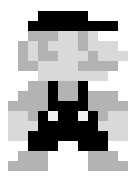The Transformer Architecture
Transformer Network Intuition
We have discussed the RNN and found that it had some problems with vanishing gradients, which made it hard to capture long range dependencies and sequences. We then looked at the GRU and then the LSTM model as a way to resolve many of those problems where you make use of gates to control the flow of information.
As we move from our RNNs to GRU to LSTM, the models became more complex. And all of these models are still sequential models in that they ingested the input sentence one token at the time, as if each unit is like a bottleneck to the flow of information, because to compute the output of this final unit, we first have to compute the outputs of all the units that come before.
Transformer architecture allows you to run a lot more of these computations for an entire sequence in parallel. So you can ingest an entire sentence all at the same time, rather than just processing it one word at a time from left to right. The major innovation of the transformer architecture is combining the use of attention based representations and a CNN style of processing, which can take input a lot of pixels and can compute representations for them in parallel.
To understand the attention network, there will be two key ideas:
- Self-Attention: The goal of self attention is, if you have, say, a sentence of five words will end up computing five representations for these five words: $A^{\langle 1 \rangle}$, $A^{\langle 2 \rangle}$ … $A^{\langle 5 \rangle}$. And this will be an attention based way of computing representations for all the words in your sentence in parallel
- Multi-Head Attention: a for loop over the self-attention process, so you end up with multiple versions of these representations
Self-Attention
We need to calculate the attention-based representations for each of the words in your input sentence. Let’s say we have the following french sentence:
Jane visite l'Afrique en septembre
Our goal will be computing an attention-based representation for each word $A^{\langle i \rangle}$. For example, one way to represent l'Afrique would be to just look up the word embedding for l'Afrique. But depending on the context, are we thinking of l'Afrique or Africa as a site of historical interests or as a holiday destination, or as the world’s second-largest continent. Depending on how you’re thinking of l'Afrique, you may choose to represent it differently, and that’s what this representation $A^{\langle 3 \rangle}$ will do.
Self-Attention will look at the surrounding words to try to figure out what does l'Afrique really mean in this sentence, and find the most appropriate representation for this.
We use the following softmax function to calculate the attention representation for each word:
\[\text{Attention}(Q, K, V) = \text{softmax}\left(\frac{Q K^\top}{\sqrt{d_k}}\right) V = \sum_i \frac{\exp(q \cdot k^{\langle i \rangle})}{\sum_j \exp(q \cdot k^{\langle j \rangle})} v^{\langle i \rangle}\]In the formula, A(q, K, V) is the attention-based vector representation of a word. We have $q^{\langle i \rangle}$, $k^{\langle i \rangle}$ and $v^{\langle i \rangle}$, representing query, key and value. These vectors are the key inputs to computing the attention value for each word.
The computation process of the word $A^{\langle 3 \rangle}$(l'Afrique) can be described in the following diagram:

First, we’re going to associate each of the words with three values called the query key and value pairs. If $X^{\langle 3 \rangle}$ is the word embedding for l'Afrique, the way q, k, v are computed as follows:
These matrices, $W^{Q}$, $W^{K}$ and $W^{V}$ are parameters of this learning algorithm, and they allow you to calculate these query, key, and value vectors for each word.
So what are these query key and value vectors supposed to do? They were named using a loose analogy to a concept in databases where you can have queries and also key-value pairs.
- $q^{\langle 3 \rangle}$ is a question that you get to ask about
l'Afrique. $q^{\langle 3 \rangle}$ may represent a question like, “what’s happening there?” - Then we compute the inner product between $q^{\langle 3 \rangle}$ and $k^{\langle 2 \rangle}$ and this is intended to tell us how good is
visitean answer to the question and so on for the other words in the sequence. The goal of this operation is to pull up the most information that’s needed to help us compute the most useful representation $A^{\langle 3 \rangle}$ up here - Next, we are going to compute the Softmax value for each inner product pairs.
- Finally, we’re going to take these Softmax values and multiply them with $v^{\langle i \rangle}$
The key advantage of this representation is the word of `l'Afrique` isn't some fixed word embedding. Instead, it lets the self-attention mechanism realize that `l'Afrique` is the destination of other words, and thus compute a richer, more useful representation for this word.
To recap, associated with each of the five words you end up with a query, a key, and a value. The query lets you ask a question about that word, such as what’s happening in Africa. The key looks at all of the other words, and by the similarity to the query, helps you figure out which words gives the most relevant answer to that question. In this case, visite is what’s happening in Africa. Then finally, the value allows the representation to plug in how visite should be represented within A^3, within the representation of Africa.
Multi-Head Attention
\[\text{MultiHead}(Q, K, V) = \text{concat}(\text{head}_1, \text{head}_2, \dots, \text{head}_n) W^O\] \[\text{head}_i = \text{Attention}(W_i^Q Q, W_i^K K, W_i^V V)\]The transformer architecture

Positional Encoding
To develop some intuition about positional encodings, you can think of them broadly as a feature that contains the information about the relative positions of words.
